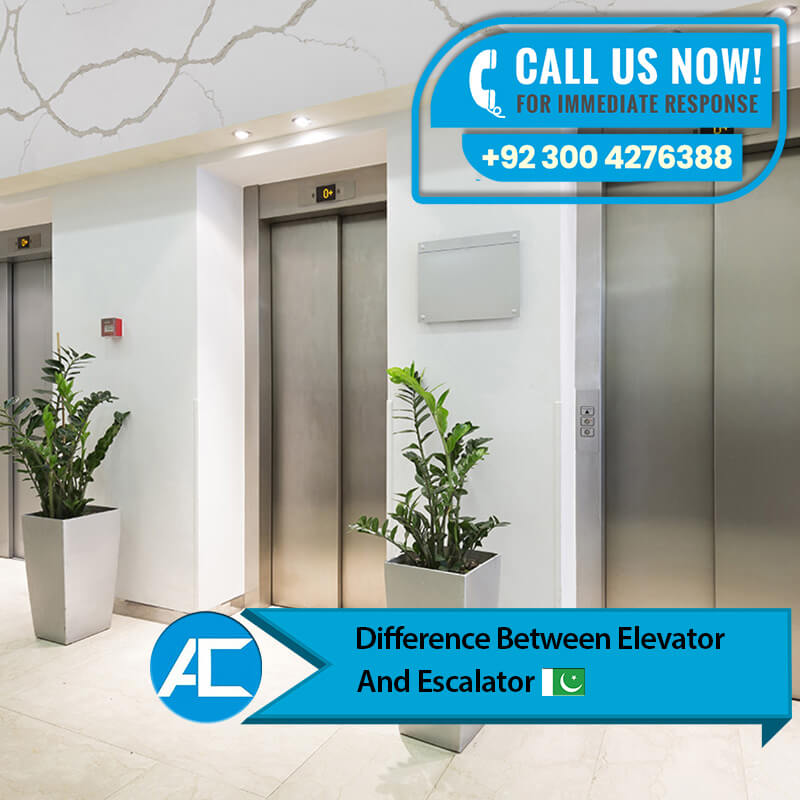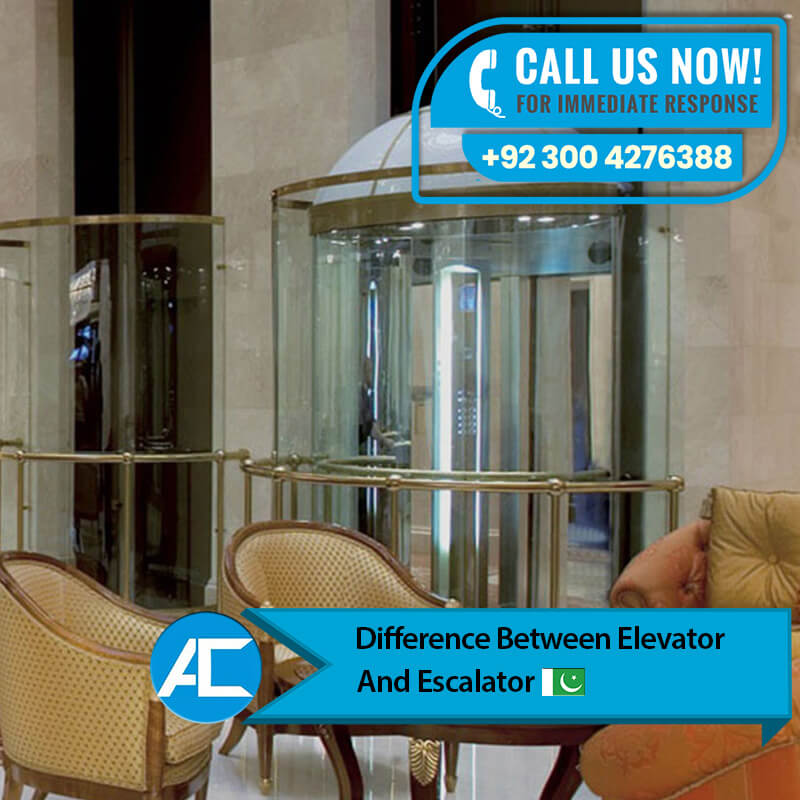Elevators, renowned as lifts, operate on a sophisticated principle of vertical movement. These devices consist of a secure cabin that manoeuvres within a vertical shaft. Robust steel cables or hydraulic systems guide elevators and offer a controlled ascent and descent. Their operation involves a powerful motor propelling the cabin, guaranteeing a safe and efficient journey between floors. This mechanism ensures passengers a smooth transition, while the elevator’s enclosed design offers security and privacy during the ride.
In contrast, escalators boast a more dynamic design based on an inclined moving walkway concept. They present a continuous loop system featuring steps that form a perpetual pathway. An electric motorized chain propels these steps, enabling people to embark and disembark as the escalator moves. This streamlined operation ensures an uninterrupted flow of movement. The open nature of escalators contributes to their convenience, allowing passengers to join the escalator without delay as they step onto the moving surface.
Elevators and escalators find their niche based on the type of movement they facilitate. With their controlled and enclosed cabins, elevators cater to situations requiring secure transportation. In contrast, escalators thrive in scenarios where a steady flow of movement is essential. These differences in mechanism and operation underscore the diverse needs these transportation solutions fulfil. Whether it is the precise vertical journey of elevators or the continuous motion of escalators, each system plays a vital role in enhancing vertical mobility in various environments.
In summary, elevators and escalators employ distinct mechanisms to enable vertical transportation. Elevators utilize enclosed cabins and controlled motor systems, ensuring secure and efficient movement between floors. With their perpetual loop design, Escalators provide a dynamic moving walkway for continuous motion. These mechanisms cater to different requirements, reflecting the versatility of vertical transportation solutions in accommodating diverse settings and passenger needs.
Get Quotes Now : 03017940456Use Cases and Environments

As versatile vertical transporters, elevators find their applications in a wide array of settings. They are a cornerstone of accessibility, particularly in structures where people with mobility challenges need to traverse multiple floors. Commercial complexes, residential buildings, and industrial facilities benefit from elevators’ ability to ensure equitable access and convenience. Access Technologies, owned by Imran Rafi, is a beacon of elevator innovation, providing tailored solutions to meet varying demands.
Conversely, escalators serve as dynamic conduits for swift movement in bustling environments. You will commonly encounter escalators in high-footfall locations such as shopping malls, airports, and transit stations. Their convenience lies in enabling passengers to effortlessly transition between floors without waiting. This steady flow aids crowd management and optimizes user experiences, aligning with the modern pace of busy urban life.
The selection between elevators and escalators hinges on the nature of the environment and its intended function. Elevators, by their enclosed cabins and controlled journeys, align with scenarios where vertical transport demands a secure and private experience. Escalators, in contrast, thrive in scenarios where rapid movement is pivotal. These different use cases emphasize how each mode addresses specific demands within various architectural contexts.
In conclusion, deploying elevators and escalators caters to diverse use cases and environments. Elevators shine in ensuring accessibility and controlled transport across vertical spaces, while escalators excel in delivering seamless movement in high-traffic areas. As Access Technologies, owned by Imran Rafi, continues to innovate in vertical transportation, the options for enhancing mobility and convenience in various settings continue to expand.
Get Quotes Now : 03017940456Safety and Maintenance

When considering vertical transportation, safety is a paramount concern. With their enclosed cabins and secure doors, elevators offer a heightened level of passenger protection. Regular maintenance of elevator components, such as cables and control systems, ensures smooth and secure journeys. Under Imran Rafi’s ownership, Access Technologies emphasizes meticulous upkeep to guarantee passenger safety and operational reliability.
Escalators also prioritize safety through features like sensors and emergency stop buttons. These mechanisms detect obstructions and halt the escalator’s motion in emergencies. Maintenance is essential to keep these safety features functioning optimally. Routine inspections of steps, handrails, and sensors contribute to preventing accidents and ensuring passengers’ well-being.
Despite these safety measures, the open design of escalators presents a slightly higher risk than elevators. This underscores the necessity for passengers to exercise caution while using escalators, particularly when carrying bags or accompanied by children. On the other hand, elevators’ enclosed cabins inherently offer a more secure space for passengers, reducing the likelihood of accidents due to external factors.
In conclusion, elevators and escalators prioritize safety through various mechanisms and maintenance practices. Elevators offer enclosed security, while escalators incorporate safety features like sensors and emergency stops. Access Technologies, overseen by Imran Rafi, commits to maintaining elevator safety standards. Balancing safety considerations with a space’s architectural and traffic needs is critical to providing secure and efficient vertical transportation options.
Get Quotes Now : 03017940456Efficiency and Space Considerations

Elevators are synonymous with efficient vertical mobility, making them indispensable in tall structures. They swiftly transport many passengers in one trip, catering to high-rise buildings’ need for speedy access. Additionally, elevators are well-suited for transporting goods, making them vital in industrial and commercial settings where efficient movement of materials is paramount.
Escalators, while slower than elevators, offer their efficiency in specific contexts. They maintain a continuous flow of people, making them ideal for moderate foot traffic locations. This steady movement enhances crowd management and minimizes congestion, aligning perfectly with the rhythm of busy public spaces such as shopping centres and transportation hubs.
One of the critical space-related advantages of escalators is their minimal footprint. Unlike elevators, escalators do not necessitate the construction of vertical shafts, making them an efficient option when space is at a premium. This feature profoundly impacts architectural design, allowing for more versatile layout configurations in buildings where space optimization is a priority.
In contrast, elevators require dedicated shafts, which can influence the building’s layout and design. However, elevators efficiently utilize the available vertical space and offer direct access to desired floors, essential in specific scenarios, particularly for individuals with limited mobility. The trade-off between the spatial footprint of escalators and the need for dedicated shafts for elevators underscores the significance of choosing the most appropriate vertical transportation solution based on the specific demands of the environment.
Get Quotes Now : 03017940456